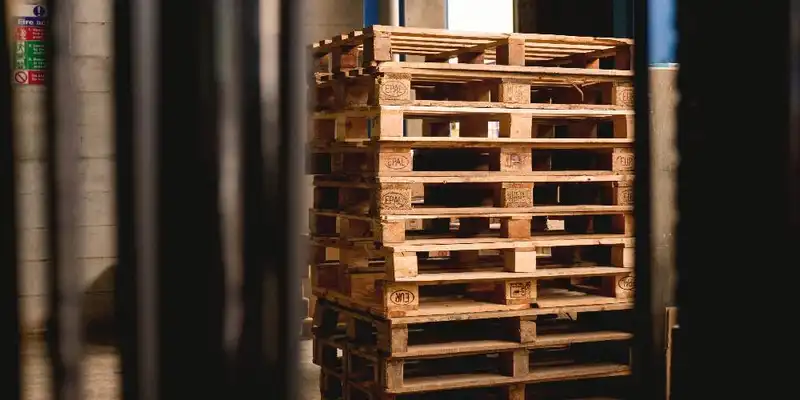4 Types of Purchase Orders & When to Use Them
A purchase order is a vital part of the inventory ordering process. This document clearly lays out the inventory purchase requests from the buyer to the supplier.
Purchase orders are legally binding contracts, which means that it is meant to hold both the business and the supplier accountable. If there is any disagreement between the two parties, this paper trail can help clear up any confusion.
While it seems relatively straight forward and simple, this form will contain vital details such as product specifics, quantities, additional instructions, service/item price, payment terms, and delivery times.
When businesses neglect to use purchase orders in their inventory ordering processes, it will be far more difficult to record and track expenses or look back on historical purchasing data for future reference.
There are four different types of purchase orders that businesses can utilize. In this article, we'll discuss each type in greater detail and when to use them.
The Importance of Purchase Orders

A purchase order is an essential backend business process when making large transactions involving two parties. Having clarity over business expenses is vital when sticking to a budget, creating inventory expense reports, and avoiding supply chain errors.
Below are five key reasons why purchase orders (POs) are essential.
1. Clear Information for Auditing
Auditors use purchase orders to look at historical data of transactions. When a company is transparent in issuing, processing, and recording purchase orders, this prevents discrepancies in financial information and allows auditors to clearly understand a business's financial state.
2. Tracking Expenses
Company expenditure can be clearly tracked with purchase orders. Knowing not only how much is spent, but also the specifics of what is being purchased gives companies key information on ordering data to optimize this process in the future. A simple look at past purchase orders and sales statistics can show whether it's more desirable for a company to buy in bulk rather than in smaller quantities.
3. Accuracy for Invoicing
An invoice is essentially the opposite of a PO. This is a document issued from the supplier to the buyer to request payment. It's still vital for the PO to be used along with invoices, however, as it offers even more clarity and accountability during the transaction process for both parties.
4. Smooth Operations
When the finance and inventory departments of a company have access to purchase orders, this creates a smooth, transparent process of restocking and fulfilling orders.
5. Legal Contracts
Purchase orders offer legal protection for both parties. If the supplier of the goods/services doesn't meet the agreements stated in the purchase order (price, quantity, item specifics, delivery date), this document can be used as proof of a breach of contract.
Types of Purchase Orders

When a company is creating purchase orders, it's important that the correct type is being issued. Though each variation is quite similar to the rest, the small differences can still impact the efficiency of transaction processes.
1. Standard Purchase Orders (SPO)
Standard purchase orders are the most common POs used. These documents are also the easiest to understand as they are the most simplistic.
When SPOs are used-
- The request for goods or services is a one-off' request.
- The specifics of the order are known (delivery date, quantity, description, price.).
- Both parties are being bound in a legal agreement to make the payment and send/receive the goods/services.
2. Planned Purchase Orders (PPO)
The PPO's are very similar to the SPOs except they are reserved for when the date of delivery is unknown.
When PPOs are used-
- The goods/services are being anticipated for the future.
- Suppliers and buyers are setting up a provisional agreement for ongoing orders.
- There's a loosely defined delivery schedule, based on when the company expects to reach the reorder point.
3. Blanket Purchase Orders (BPO)
This is another type of purchase order that is similar to the standard, but again with less information. BPO's are primarily used when the timing and quantity of goods remain uncertain.
When BPOs are used-
- A company knows what service/good is needed, but the item quantity and timing is not known.
- A company anticipates its demand for services/goods over a specific period.
- Limits for spending and other terms and conditions have been agreed upon by the supplier and buyer.
- To secure a better price within the guaranteed agreement that will require recurring purchases.
4. Contract Purchase Orders (CPO)
The contact purchase order (CPO) is the most complex of the 4 types of purchase orders. These are considered to be purchase agreements' that are used to establish the legality of terms and conditions for future transactions.
When CPOs are used-
- There's a formal long-term agreement between the supplier and buyer.
- To set legally binding terms and conditions for all transactions in the future.
- They are used as the overarching framework where SPOs can later be made.
- Without expiry dates, they are used to streamline and safeguard the purchasing transaction process between the two parties.
It sets the standards by which the transactional relationship will operate in the future - including the SPOs that will eventually be made. Generally, CPOs are made under a set time frame with an expiry date, which is usually 1 year.





